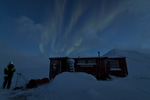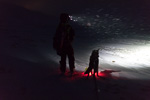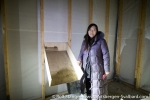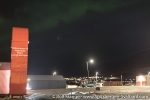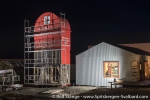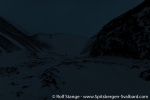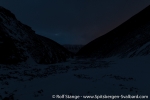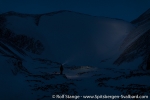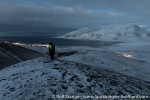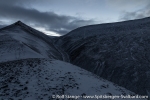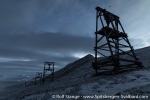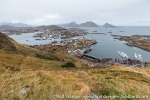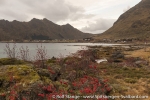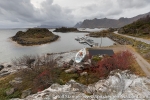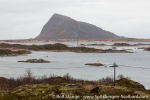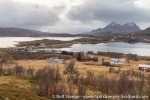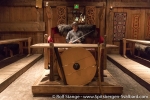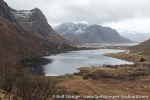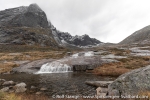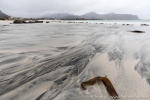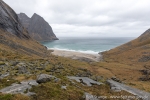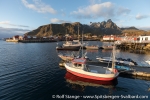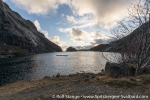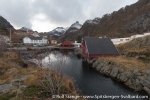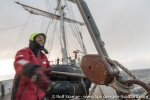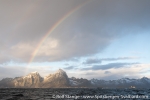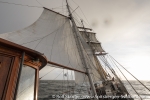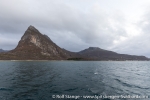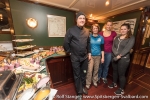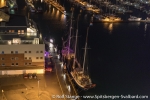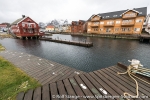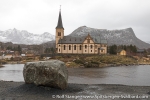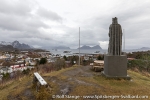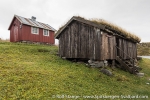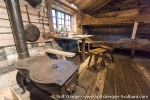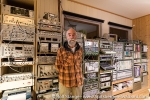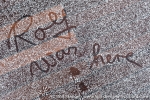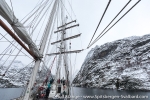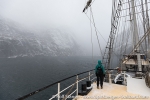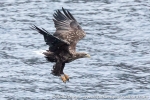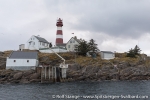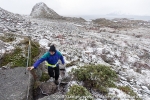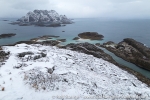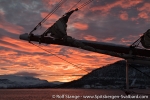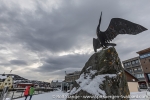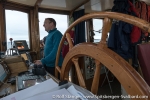-
current
recommendations- Liefdefjord
New page dedicated to one of Spitsbergen's most beautiful fjords. Background information and many photos.
- New Spitsbergen guidebook
The new edition of my Spitsbergen guidebook is out and available now!
- Liefdefjord
New page dedicated to one of Spitsbergen's most beautiful fjords. Background information and many photos.
Page Structure
-
Spitsbergen-News
- Select Month
- May 2025
- April 2025
- March 2025
- February 2025
- January 2025
- December 2024
- November 2024
- October 2024
- September 2024
- August 2024
- July 2024
- June 2024
- May 2024
- April 2024
- March 2024
- February 2024
- January 2024
- December 2023
- November 2023
- October 2023
- September 2023
- August 2023
- July 2023
- June 2023
- May 2023
- April 2023
- March 2023
- February 2023
- January 2023
- December 2022
- November 2022
- October 2022
- September 2022
- August 2022
- July 2022
- June 2022
- May 2022
- April 2022
- March 2022
- February 2022
- January 2022
- December 2021
- November 2021
- October 2021
- September 2021
- August 2021
- July 2021
- June 2021
- May 2021
- April 2021
- March 2021
- February 2021
- January 2021
- December 2020
- November 2020
- October 2020
- September 2020
- August 2020
- July 2020
- June 2020
- May 2020
- April 2020
- March 2020
- February 2020
- January 2020
- December 2019
- November 2019
- October 2019
- September 2019
- August 2019
- July 2019
- June 2019
- May 2019
- April 2019
- March 2019
- February 2019
- January 2019
- December 2018
- November 2018
- October 2018
- September 2018
- August 2018
- July 2018
- June 2018
- May 2018
- April 2018
- March 2018
- February 2018
- January 2018
- December 2017
- November 2017
- October 2017
- September 2017
- August 2017
- July 2017
- June 2017
- May 2017
- April 2017
- March 2017
- February 2017
- January 2017
- December 2016
- November 2016
- October 2016
- September 2016
- August 2016
- July 2016
- June 2016
- May 2016
- April 2016
- March 2016
- February 2016
- January 2016
- December 2015
- November 2015
- October 2015
- September 2015
- August 2015
- July 2015
- June 2015
- May 2015
- April 2015
- March 2015
- February 2015
- January 2015
- December 2014
- November 2014
- October 2014
- September 2014
- August 2014
- July 2014
- June 2014
- May 2014
- April 2014
- March 2014
- February 2014
- January 2014
- December 2013
- November 2013
- October 2013
- September 2013
- August 2013
- July 2013
- June 2013
- May 2013
- April 2013
- March 2013
- February 2013
- January 2013
- December 2012
- November 2012
- October 2012
- September 2012
- August 2012
- July 2012
- June 2012
- May 2012
- April 2012
- March 2012
- February 2012
- January 2012
- December 2011
- November 2011
- October 2011
- September 2011
- August 2011
- May 2011
- April 2011
- March 2011
- February 2011
- January 2011
- December 2010
- November 2010
- September 2010
- August 2010
- July 2010
- June 2010
- May 2010
- April 2010
- March 2010
- February 2010
- November 2009
- October 2009
- August 2009
- July 2009
- June 2009
- May 2009
- April 2009
- March 2009
- February 2009
- January 2009
- December 2008
- November 2008
- October 2008
- August 2008
- July 2008
- June 2008
- May 2008
- April 2008
- March 2008
- February 2008
- April 2000
- Select Month
-
weather information
-
Newsletter

| Guidebook: Spitsbergen-Svalbard |
Home
→ November, 2017
Monthly Archives: November 2017 − Travelblog
The hut in Foxdalen – 21st November 2017
Tue
21 Nov
2017
As mentioned before, November is not exactly the time for long trips out in the arctic wilderness. But that does not mean that you can’t go out on tour. Even a few kilometres can be interesting and even challenging in darkness, wind and drifting snow. Under clouds and snowfall, darkness is darkness is darkness. As long as you have got the wind in your face from the left side, the direction will be roughly ok. Fintuning is done later with help of the GPS. How did Nøis, Ritscher and all these guys do it in the old days? No idea. Well, they were not wimps as we are today. The just went for it and kept searching for the hut for some hours, if necessary. And if they did not find it at all, they were son food for the foxes. Good these days are over! It is still challening enough. The heavy pulk is pulling behind me, a strong sledge dog is pulling in front of me and under me, the skis are gliding over young snow.
- gallery anchor link: #gallery_1365
Click on thumbnail to open an enlarged version of the specific photo.
Finally, we have reached the hut in Foxdalen. Just in time, the sky is clearing up and the courtain is lifting for a northern light of the more impressive sort, to put it mildly. I did not have the camera ready to capture the most amazing moment, sometimes there are more important things to do. But we did enjoy it, not just a little bit! And soon, the fire was going in the ovn …
Santa Claus’ Letterbox – 20th November 2017
If you have been to Longyearbyen since December 2013, then you have seen the huge, red letterbox just upon entering town, as you came from the airport. This was the Santa Claus Mailbox, and here you could post your letters to Santa Claus.
The letterbox was an idea from Po Lin Lee from Honkong, but she did not just send an idea and money from far away. She was and is in Longyearbyen and puts a lot of effort into hear postal project. But – the permission to have it standing there was only temporary. It ran out on December 2015, and then, the letterbox was to be removed again, or a new permission had to be obtained.
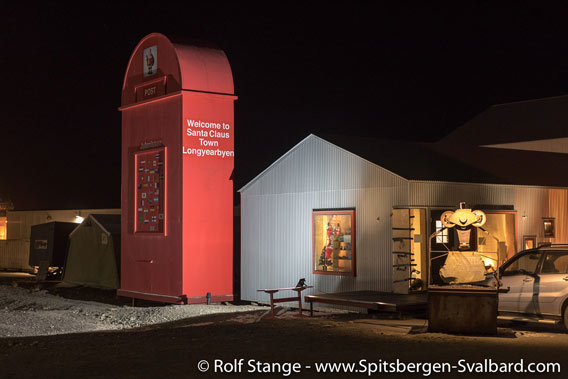
Neither of this happened, until Monday. What happened, was a fight that took a lot of time and energy. Letters, admonitions and warnings were written, bureaucrats and lawyers did what bureaucrats and lawyers do. Neighbours would have to be contacted to give their consent to a renewed permission for the letterbox to remain in place, but is is said that this never happened. Language difficulties seem to have played a role.
Then, the local administration (Longyearbyen Lokalstyre, LL) set a deadline: the letterbox was to disappear on Monday, November 20, 2017. The order to remove it had already been given by LL to a local construction firm. The invoice about the substantial amount of 129,000 NOK (about 13,300 Euro) was in the end to be paid by Po Lin Lee.
Who reacted by ordering a company from the mainland to take the letterbox down in a more carefuly way, so it could be re-built again later somewhere else. Before that happened, Po Lin Lee gave visitors a last chance to visit the letterbox, only to find out that the door had been firmly locked with big screws – without her, the owner, knowing about it. Also, there were traces of forecul break-in on the door, possibly from a local company who had already removed the electrical system on behalf of the local administration.
Gallery – Santa Claus’ Letterbox – 20th November 2017
- gallery anchor link: #gallery_1363
Click on thumbnail to open an enlarged version of the specific photo.
Meanwhile, the discussion in local social media group had gained some momentum. Some were happy that local democracy had won a victory and the letterbox was now about to disappear, while others expressed sadness. There are different opinions regarding the question if Longyearbyen should be presented to the global public as a Santa Claus Town. The local legend actually says that Santa Claus lives in Mine 7b, above Nybyen. During the Christmas period, there is light up there, and there is a letterbox (of more conventional dimensions) next to the road below it, where children can send their letters to Santa Claus as part of the local christmas happenings.
The big Santa Claus letterbox was now removed by a company on behalf of Po Lin Lee. According to her, there are several interested parties that might step in and take over the letterbox to put it up again elsewhere in Scandinavia. And Po Lin Lee has not given up hopes that she might actually be able again to put it up somewhere else in Longyearbyen.
Happy Christmas time to everybody!
More arctic Christmas stories? – Click here to check out my (German) book with historical Christmas stories from high latitudes.
Ugledalen – 16th November 2017
Thu
16 Nov
2017
A small valley, not too far from Longyearbyen. But not too close either. Compared to the polar night far away from any artificial light, Longyearbyen is still bright as day – well, almost.
With these 3 images, I try to give a more or less realistic impression of what the polar night actually looks like. I guess that is hardly possible, with a photo on a screen. The photos are still too bright, but when I make them even darker, then you will probably think that I have photographed black squares … when you are out in this landscape for a while, then your eyes are getting used to it to some degree and you can still see a lot! Certainly enough for general orientation.
Gallery – Ugledalen – 16th November 2017
- gallery anchor link: #gallery_1361
Click on thumbnail to open an enlarged version of the specific photo.
Things are different when it is cloudy and windy, with drifting snow. Then: darkness is darkness is darkness.
Polar night – 14th November 2017
Tue
14 Nov
2017
Back in Longyearbyen. Spitsbergen in mid-November may not be your place if you love sunshine. You have to appreciate the polar night to enjoy being here now. The last time the sun made it above the horizon was in late October, but today, November 14, the sun remains at least 4 degrees below the horizon even at noon. That is the beginning of the polar night, officially. There is some twilight around mid-day, so-called „nautical twilight“ for a couple of hours. Not even „civil twilight“, which most people would describe as „not completely dark“, but we don’t even have that anymore. There is not much to be seen of the moon either. It is going up in the middle of the night and down again in the afternoon, but it stays so low that you don’t really recognize that it is actually there.
Still, it is fully possible to have orientation while out on tour mid-day. The stars give some light, so that works well at least when there is snow. There is not much snow, but there is some, at least.
Gallery – Polar night – 14th November 2017
- gallery anchor link: #gallery_1359
Click on thumbnail to open an enlarged version of the specific photo.
These photos give some impressions from a little hike during the „brightest“ hours. They are actually too bright, more so than in reality. No photography anymore without a tripod! It is still fun to be outside, but this is obviously not the time for very long trips out in the nature. You do a walk, and you get your work done in town, you spend time meeting friends …
There is, by the way, an info-page on this website dedicated to the polar night and midnight sun.
Vestvågøy – 08th November 2017
Wed
8 Nov
2017
Today, we explore the large Lofoten island of Vestvågøy. The sun is above the horizon from 8 to 15 hours, but it remains hidden behind a thick cloud cover, so there is not too much light. That does not hamper the beauty of the scenery, actually it fits this rough landscape pretty well. But we limit our hiking activities to a little ascent of a slope next to Ballstad for a great view over the settlement and the coastal landscape (have a look at the 360 degree panorama of Ballstad that I shot on this occasion. Then, we follow a small road to explore the stunning coastline. We also have time for a short visit to the famous viking museum Borg. The museum is quite impressive. There is the 1:1 reconstruction of the huge long house of a viking chief. The museum was opened in 1995, and I happened to be there on the day of the opening. I was impressed back then, and I am still impressed today. The modern exhibition house with cinema and souvenir shop and everything that is part of a museum today did not exist, but the long house was there, and that was and is great fun. You can dress and feel like a viking. But to spend the polar night here, which is several weeks long, without any light source that we found find acceptable, from our 2017 perspective? There are no windows. Glass was as expensive as its weight in gold, and that was too much even for the powerful viking chief of Borg. And it was dark anyway outside during large parts of the winter. So they spent the winter in darkness.
Gallery – Vestvågøy – 08th November 2017
- gallery anchor link: #gallery_1357
Click on thumbnail to open an enlarged version of the specific photo.
Kvalvika – 07th November 2017
Tue
7 Nov
2017
Once again we chose the route southwards, to Flakstadøy and Moskenesøy. The scenery on these southern islands is just too impressive. Even on such a rather grey and not completely dry November day.
The outer side of the Lofoten islands is constantly beaten by weather, wind and waves of the north Atlantic, but it is famous for some beautifull white sand beaches. There is one in Ramber directly next to the road (and just on the other side of the same road, there is a very recommendable café, as we learn later the same day on the way back).
Gallery – Kvalvika – 07th November 2017
- gallery anchor link: #gallery_1338
Click on thumbnail to open an enlarged version of the specific photo.
And there is another, really stunning beach, in a dramatic scenic setting, further south on Moskenesøy, in Kvalvika. There, you have to do something before you can enjoy the beach, it is quite a walk up the mountain and down on the other side. A lovely hike! And in November, you can even have the feeling to be the only person in the world in this amazing place, for a short while, and watch the waves washing up the white sand.
From Ballstad to Å – 06th November 2017
Mon
6 Nov
2017
After a lot of goodbyes and farewells, everybody was going his or her way after leaving from or with Antigua in Bodø. For most, the voyage went southwards. For us, it went northwards. Back to Lofoten. It is actually possible to travel there without a ship 🙂
Ballstad on Vestvågøy was to be our Basecamp for a couple of day to discover Lofoten from another perspective. We want to see a lot of places that are quite easily reached over land, rather than with a ship. We want to take time to let the sub-arctic weather (it continues to be quite sub-arctic, November-style) and the nordic light touch the eye, soul and memory card without any rush. We want to enjoy the rugged Lofoten landscape without a tight schedule. A landscape of steep slopes and alpine peaks rising straight up from the shorelines. I try to imagine what it might have been like here maybe 12000 years ago, during the last ice age. It is a mental journey to northwestern Spitsbergen. That’s how it must have been like here back then! Today, Lofoten is an open air museum of previously glaciated landscapes, like a picture book.
Gallery – From Ballstad to Å – 06th November 2017
- gallery anchor link: #gallery_1334
Click on thumbnail to open an enlarged version of the specific photo.
For a first overview, we travel down to Å, all the way south on Moskenesøy. It is a mental journey not only back to the ice age, but also 22 years back for me, when a stay of several months on these islands gave my own connection to the far north a strong boost. I find it easy to understand why, looking at this landscape today.
Vestfjord & Bodø – 04th November 2017
Sat
4 Nov
2017
The wind had calmed down a bit, but it was still strong enough, coming from the south, so we decided to set sails and course to the west, rather than motoring against wind and waves southwards. So we waved goodbye to Lofoten when we left the pier in Svolvær after breakfast (better to be on the safe side!). The islands gave us a lovely farewell, with some sun, a rainbow above the famous „Lofoten wall“ (of mountains, rising straight up from the sea) and fair winds.
We spent the next couple of hours sailing in good style across Vestfjord, straight towards the mainland, before we reached the skerries at the Norwegian coast. A stunning coastline indeed! It is always great to see new land.
The last afternoon of such a voyage goes always quickly by. There is something to see as long as there is light. The sun is currently going down here close to 3 p.m. The final presentations, the triplogs needs to be finished, some preparations for departure tomorrow. The usual logistics. Still, different this time. It is the last time for this northern season.
A big circle closed when we went alongside in Bodø in the evening. We left from here on May 19 to sail via Lofoten and Bear Island up to Spitsbergen. It was the same place where we left, but it feels like a galaxy away. Back then, it was 24 hours of daylight. We had a long arctic summer ahead of us. Now, the sun is hardly making it above the horizon. And we have got a long arctic summer behind us. So many adventures with all the good crew of the Antigua and all the polar travellers who joined us on the various journeys.
Gallery – Vestfjord & Bodø – 04th November 2017
- gallery anchor link: #gallery_1332
Click on thumbnail to open an enlarged version of the specific photo.
A big „thank you“ to everybody who was part of it for a great time, full of amazing adventures, impressions … you have never seen everything in the Arctic, you keep learning forever. The way there, to have seen and to know everything, is infinite. Yet, we got a good bit further. It is the purpose never really to get there, rather to spend as much time as possible on the way. It would be a shame to have seen it all, you have to have some dreams left … there will alway be plenty of it. The journey will never end.
Those thoughts aside – the spirits were high on this last evening. The last week had not given us any whale sightings or northern lights really worth mentioning, but other than that, actually quite a lot. Many impressions as they are typical for this landscape of coasts and islands in north Norway at this season. Good atmosphere on board. Good to have been part of it!
Kabelvåg-Svolvær-Laukvik – 03rd November 2017
Fri
3 Nov
2017
The wind had become even stronger during the night, so we were quite happy to be already in the harbour of Kabelvåg. It is much nicer to go for a little walk and to visit the Lofotmuseum or the Lofotaquarium. Hats off to the group who went for the hike from Kabelvåg to Svolvær in wind, rain, very wet terrain and approaching darkness!
Unfortunately, the harbour master had ordered us to a remote corner of the industrial harbour of Svolvær, for reasons unknown to me. The way to Svolvær downtown, following the E10 over a bridge and through a tunnel, is not exactly what I consider northland romantic. Considering the rather poor weather, many preferred the cosiness of the ship above a walk anyway.
But in the evening, we went to the northern light entre in Laukvik to enjoy the hospitality and the presentation of Rob and Threes in cosy atmosphere (inside; the atmosphere outside was rather unpleasant). Everybody knew everything about coronal holes, solar wind, magnetosphere, activity levels etc. after the lecture, without any doubt!
Gallery – Kabelvåg-Svolvær-Laukvik – 03rd November 2017
- gallery anchor link: #gallery_1330
Click on thumbnail to open an enlarged version of the specific photo.
It did actually clear up a little bit later on. The bus ride back to Svolvær was a scenic pleasure, with the light of the full moon on mountains, fjords and lakes. It would have been nice to stop to put the tripod up. But just enjoying it was also nice! No northern light showed up during that evening, unfortunately. Well, we were obviously not up for that bit of luck.
Trollfjord-Skrova – 02nd November 2017
Thu
2 Nov
2017
The wind in Raftsund, where we had anchored for the night, was really strong, but it became a bit less in the early morning. The combination of the fjords and islands, rugged mountains, wind and snow made a very true and scenic impression of this harsh nature: wild and beautiful. This is how nature often is in the far north. Of course, there is sometimes a blue, sunny sky and calm water. But this here is normal life. Wild and beautiful.
„Wild“ and „beautiful“ changed in Trollfjord by the minute, as the snow squalls came and went. From zero visibility to clear views of the mountains, from calm waters to screaming winds within moments.
We were just about to leave when a whole family of 3 sea eagles came along. Several times, they flew past the ship in close distance. Good fun to have a fast camera now 🙂
Gallery – Trollfjord-Skrova – 02nd November 2017
- gallery anchor link: #gallery_1328
Click on thumbnail to open an enlarged version of the specific photo.
The attributs „wild“ and „beautiful“ were also an appropriate description of our afternoon visit to Skrova. Entering the harbour between all those rocks and skerries is always impressive, and then we were alongside. Soon we were ready for take-off to explore this lovely little island, walking through the little settlement around the harbour, across the island to some beautiful little bays with white sand beaches. Wind, cold, snow and approaching darkness could not keep some brave hikers to ascend Skrovafjellet. The reward came in shape of stunning views over the sea and islands.
We made the short passage to Kabelvåg in the evening. The forecast for tomorrow promised more wind, so it was good to get there today.
Harstad – 01st November 2017
Wed
1 Nov
2017
The history of the area goes back thousands of years, and it has got many chapters, most of them rather unpleasant. We had a look at some of that during the morning’s excursion to the Trondenes peninsula.
The Adolf gun (they really use that term in public) was part of Hitler’s fortification of the Atlantic coast. The sheer dimensions and the technology of this large cannon are as impressive as its background: people do obviously not save any effort or money when it comes to destroying something. If they only put a fraction of that effort and money into making things better … well. At least, the Adolf gun was never fired in anger, only for testing and practising.
Nearby Trondenes Museum took us through centuries of local history. Stone age hunters and fishers, vikings, early Christians, stockfish trade and so on.
Gallery – Harstad – 01st November 2017
- gallery anchor link: #gallery_1326
Click on thumbnail to open an enlarged version of the specific photo.
Directly upon leaving, the sails went up. Soon we thought we might have to take them down again after no time, as we were almost stationary in the straits northeast of Harstad. But then, the wind came back, more sails went up, and we got a lovely and exciting bit of sailing, I mean real sailing, up to a good 10 knots. A quick turn – the coast just did not want to move, so we had to – and finally the wind died down again and the took the sails down. Just in time for the bridge at Risøysund, which is always good for an interesting passage (bridge height 30 metres, height of Antigua’s main mast: 31 meters. So that works!).
News-Listing live generated at 2025/May/23 at 06:44:42 Uhr (GMT+1)

